Kindred structures
"Pawns are the soul of chess", quipped André Danican Philidor, and 269 years after stating that adage, it has not only lost none of its power, it has become central to our understanding of chess. Every opening is defined by the pawn structures, and as a result every game. A game can be changed, even quite violently, and none is more so from a strategic point of view than a modification in the pawn structure. When and if it is changed, we must revise our plans and the player who is best able to cope with these changes will likely get the upper hand.
Let’s suppose you are studying a game with a fairly innocuous opening setup:
The position above was reached via 1.d4 Nf6 2.Nf3 d6 3.g3 g6 4.Bg2 Bg7 5.O-O O-O 6.Re1 Nbd7 7.e4 e5 8.Nc3 c6, but similar positions could be reached also by very different move orders and openings. Let’s run a quick search of the pawn structure alone. To do so, just go to the Report tab, and click on Similar Structures.

A small pane will open for a search. It will show just the pawns, but even then not all. We can see the a, b, and h-pawns are missing.
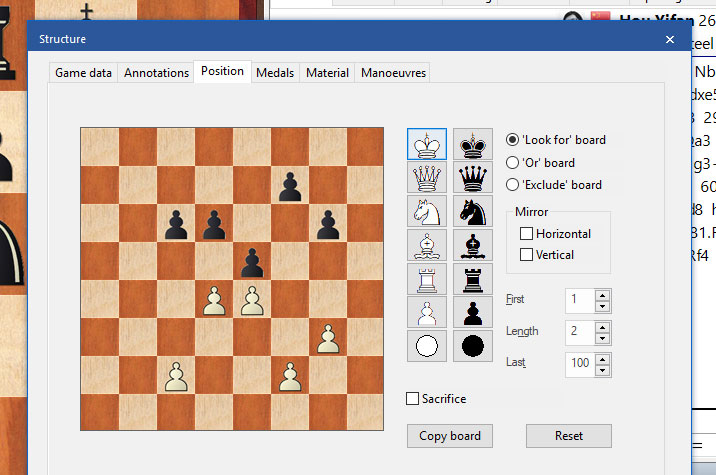
The reason is that unless you require a complete and perfect match, including them won’t necessarily be helpful. Would the strategy be completely redefined if the b-pawn is on b3 or b6 for example? It might, but the center is still where the crux of the battle will take place.
Still, let’s at least reduce some of the search results, by including only games by players rated 2400 or more. In this pane we go to Game Data, and then set the rating to 2400 and Both. Now we press Ok, and see what it comes up with.
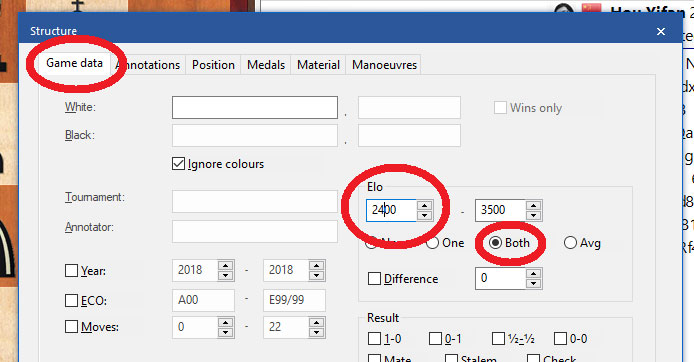
The results are in and we have some 700 games. Let’s first get an idea as to what openings are most likely to lead to this structure. To do so, we highlight all the games found in the search. Just click on one, and then press Ctrl-A (to select all).
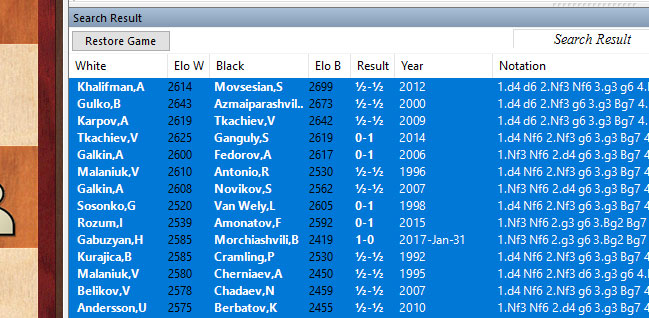
We now right click on the highlighted games, and press Statistics (or just press S). We now have the statistics results. To see a breakdown per ECO code, we choose ECO A-E. The results say that ECO codes A41, B10, and C41 are among the most popular.
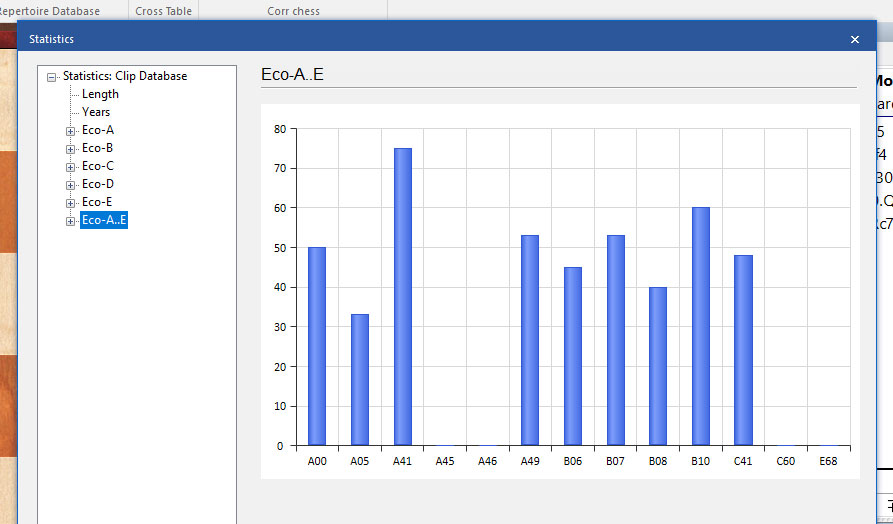
We choose C41 since it is of a completely different opening system. Translated into English it means that a study of the Pirc, Modern, Anti-King’s Indian, and the Philidor Defense are most likely to reach that structure.
Ok, this is interesting, but how to work on it and improve one’s understanding? The first thing, if you own Mega 2018, or a previous edition, is to rerun the search, but this time have it only show annotated games. Since Mega has over 70 thousand annotated games, it is bound to turn something up.
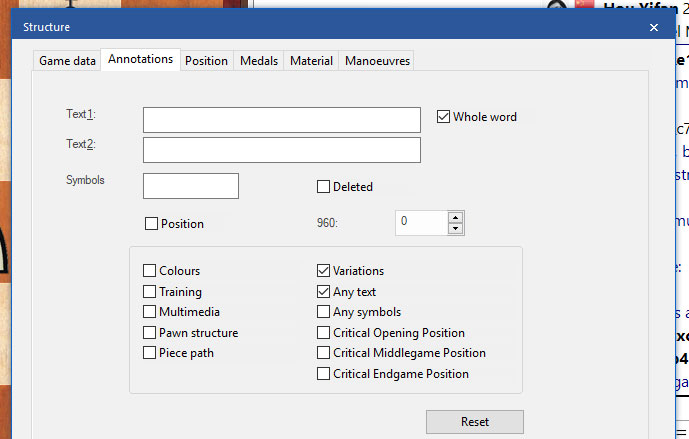
The "Mega" is the database every serious chessplayer needs. The database contains 7.1 million games from 1500 to 2017, in highest quality standard, full of top level analyses and completely classified.
Reading the notes should help provide insight on how some typical games went.
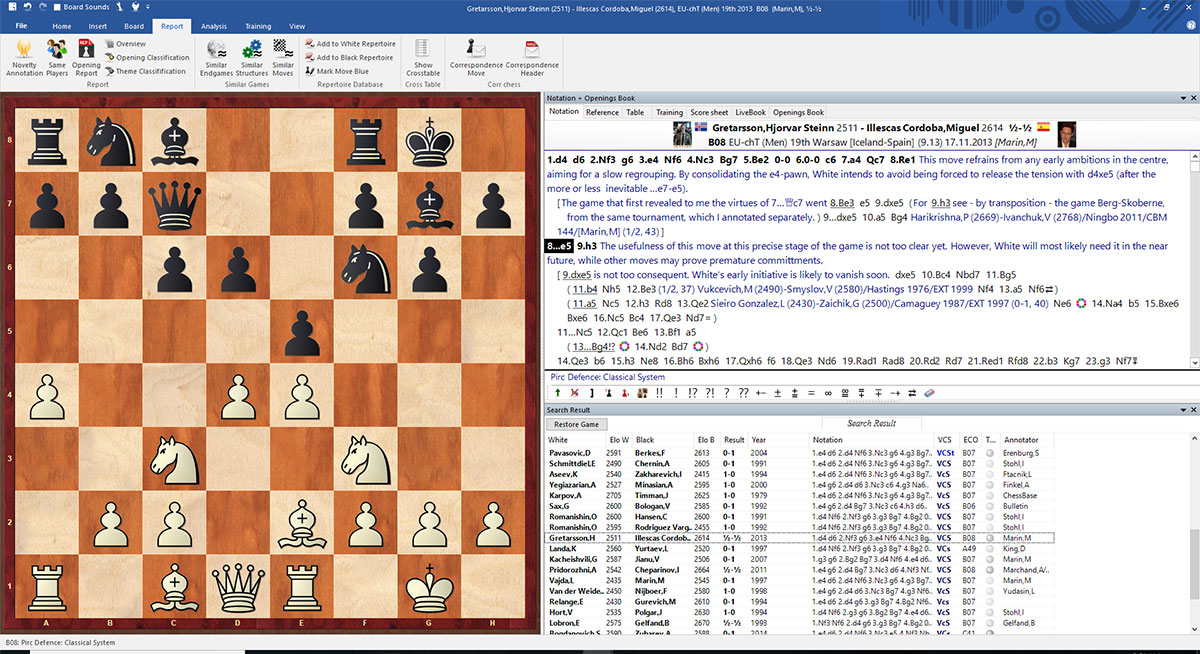
An annotated game from Mega 2018, Gretarsson vs Illescas, 2013, featuring a similar pawn structure
Let’s suppose you are feeling more confident about some of its ins and outs and would like to practice. Do you need a coach, or wait for a tournament? Hardly. You have two options, both of which involve Fritz:
If you are a ChessBase Account subscriber, you can go to the Training tab above, and select Play Out Against Fritz.
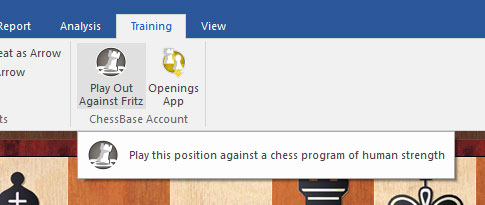
This will open your browser to the Fritz app with the position already set up. All you need to do is choose a level and start playing.

At the airport, in the hotel or at home on your couch: with the new ChessBase you always have access to the whole ChessBase world: the new ChessBase video library, tactics server, opening training App, the live database with eight million games, Let’s Check and web access to playchess.com
If you own Fritz 16, or another program, then choose File, and Goto Fritz. It will send the game to Fritz and from there you can start a game or do whatever you prefer.
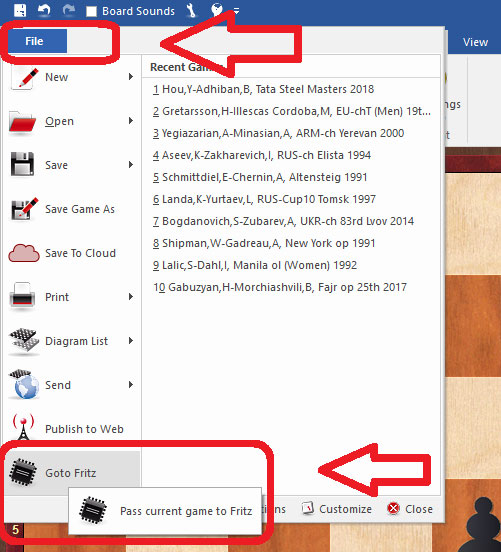
Finally, if you narrow it down to an opening, you can look up something in the ChessBase Shop where you can use position search and are bound to find something that suits your level and need.
The next time you are studying an opening or a game, don't forget this valuable tool that can help you maximize your learning.
You might also like

































